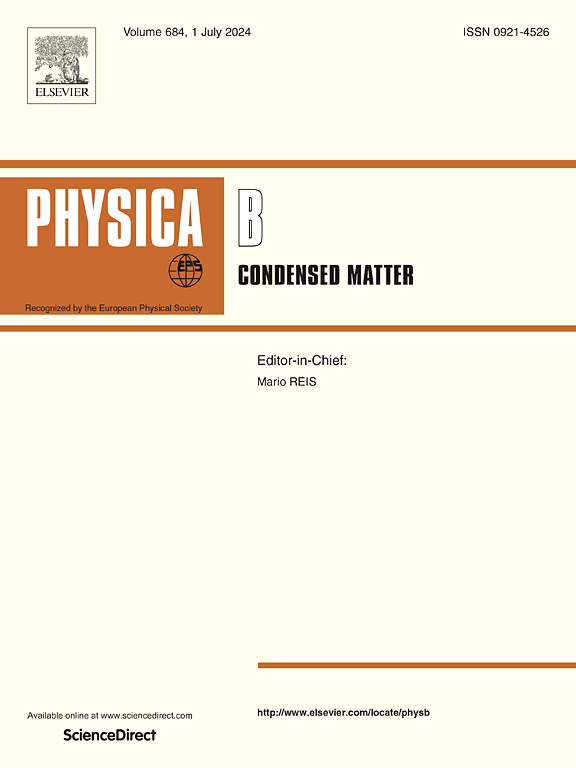First-principles calculations on the mechanical, electronic and thermodynamic properties of t-C88 carbon allotrope under high pressure
IF 2.8
3区 物理与天体物理
Q2 PHYSICS, CONDENSED MATTER
引用次数: 0
Abstract
The new tetragonal carbon allotrope t-C88, which is the subject of this work, is distinguished by its distinct mechanical performance at high pressure and structural characteristics. t-C88 shows hybridization of sp2 and sp3 carbon atoms, in contrast to other carbon compounds that are mostly made of sp2-hybridized carbon atoms. We investigated the elastic characteristics and anisotropy of t-C88 at different pressures (0–20 GPa) using first-principles computations. Our results show that t-C88 exhibits strong elastic anisotropy, especially above 15 GPa, and retains mechanical stability by meeting Born-Huang requirements. In order to emphasize the material's reaction to high pressure, this study offers a wealth of information on the following criteria: Poisson's ratio (v), bulk modulus (B), shear modulus (G), Young's modulus (E), elastic constants (Cij), and universal anisotropy (AU). Interestingly, t-C88 shows more resistance to compressional deformation than shear deformation. The high B/G ratio of t-C88 indicates that its mechanical characteristics indicate that it will become ductile with increasing pressure. Moreover, the understanding of t-C88 under high-pressure conditions will open viable options for various applications, including high-performance composites for enhanced strength and durability, protective coatings requiring superior mechanical stability, advanced sensors due to its tuneable electronic properties, energy storage devices leveraging its unique characteristics, and electronic components.

高压下t-C88碳同素异形体力学、电子和热力学性质的第一性原理计算
新型的四方碳同素异形体t-C88,是本工作的主题,以其独特的高压机械性能和结构特点而著称。t-C88表现出sp2和sp3碳原子的杂化,而其他碳化合物主要由sp2杂化碳原子组成。利用第一性原理计算研究了t-C88在不同压力(0-20 GPa)下的弹性特性和各向异性。结果表明,t-C88表现出较强的弹性各向异性,特别是在15 GPa以上,并保持了Born-Huang要求的机械稳定性。为了强调材料对高压的反应,本研究提供了以下标准的丰富信息:泊松比(v)、体模量(B)、剪切模量(G)、杨氏模量(E)、弹性常数(Cij)和通用各向异性(AU)。有趣的是,t-C88对压缩变形的抵抗比剪切变形更强。t-C88的高B/G比表明其力学特性表明,随着压力的增加,它将变得具有延性。此外,对高压条件下t-C88的了解将为各种应用提供可行的选择,包括增强强度和耐久性的高性能复合材料,需要卓越机械稳定性的保护涂层,由于其可调谐电子特性而产生的先进传感器,利用其独特特性的能量存储设备和电子元件。
本文章由计算机程序翻译,如有差异,请以英文原文为准。
求助全文
约1分钟内获得全文
求助全文
来源期刊

Physica B-condensed Matter
物理-物理:凝聚态物理
CiteScore
4.90
自引率
7.10%
发文量
703
审稿时长
44 days
期刊介绍:
Physica B: Condensed Matter comprises all condensed matter and material physics that involve theoretical, computational and experimental work.
Papers should contain further developments and a proper discussion on the physics of experimental or theoretical results in one of the following areas:
-Magnetism
-Materials physics
-Nanostructures and nanomaterials
-Optics and optical materials
-Quantum materials
-Semiconductors
-Strongly correlated systems
-Superconductivity
-Surfaces and interfaces
 求助内容:
求助内容: 应助结果提醒方式:
应助结果提醒方式:


